For an example if I use 3.7 V battery, what is the lasting voltage?
What if my limit is 2.7 V in my system, I mean that system will
passive under 2.7 V, how will be the calculation? What if I use the
limit as 2.4 V? In the basic calculation formula we couldn't use
voltage level.
The 'lasting voltage' (discharge cutoff voltage) is specified by the manufacturer. If you use a higher cutoff voltage the realizable capacity will be less. How much less? That depends on the particular battery and how it is used. If you use a lower cutoff voltage the capacity will be increased, but probably not by much and the battery could be damaged.
Battery manufacturers tend to rate their products with the most optimistic specifications that they can get away with, which often involves running the battery down to the lowest possible voltage that doesn't immediately destroy it. If they say 2.7 V, don't go below it!
As a practical example, here is a test of two samples of a Samsung INR18650-20Q 2000mAh Li-Ion cell:-

The manufacturer rates this cell for discharge down to 2.5 V. These tests only took it down to 2.8 V, but it is clear from the discharge curves that the battery is running out of active material even before then. The difference between 2.8 V and 2.5 V is so small that there is no point in continuing the tests down to a lower voltage.
At higher discharge current the voltage is generally lower (due to internal resistances and limited charge mobility) so the realizable capacity may be much less if a high cutoff voltage chosen in a device that draws high current.
The manufacturer should specify the discharge current at which the capacity is rated. Depending on the type of cell and intended application, this could be 1C (where 'C' is the current for a nominal 1 hour discharge, in this case 1 x 2000 mA = 2 amps) or a lower C rate for 'high capacity' cells that are designed for slower discharge.
In this test the 1C discharge (bright cyan line) shows a voltage 'knee' at ~3.3 V. Beyond this point there is virtually no capacity left, and no point continuing to suck out the tiny bit of energy left. At 0.1C (0.2 A) the 'knee' voltage rises to ~3.4 V, but the capacity at this lower discharge rate is not much higher.
Now compare that graph to this test of a 'high capacity' cell of the same size, also rated for discharge down to 2.5 V:-

The thinner plates in this cell have higher resistance, so it doesn't handle high discharge currents well. The voltage 'knee' is also much softer, with significant capacity remaining below 3.3 V. For this cell a cutoff voltage of 3.0 V would be realistic, while discharging all the way down to 2.5 V might just meet its rated capacity of 4 aH.
Another thing to note about these discharge curves is the 'bump' that occurs before the final nosedive, particularly noticeable at low current. This indicates changes in the chemical reactions occurring in the cell, which may result in increased wear and reduced cycle life beyond this point. In both of these examples the 'bump' occurs just below 3.5 V. This suggests 3.5 V might be a better cutoff voltage for low drain applications.
Device manufacturers often choose a higher "empty" voltage to increase cycle life. This reduces realizable capacity, but total capacity over the cell's lifespan is often dramatically improved because the cell gets damaged less on each discharge.

